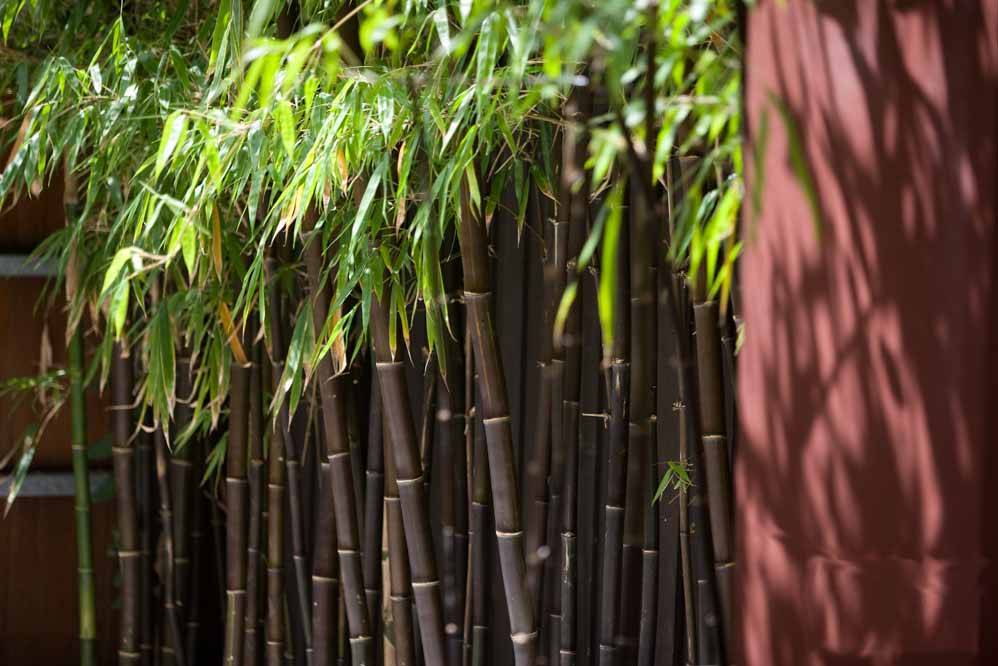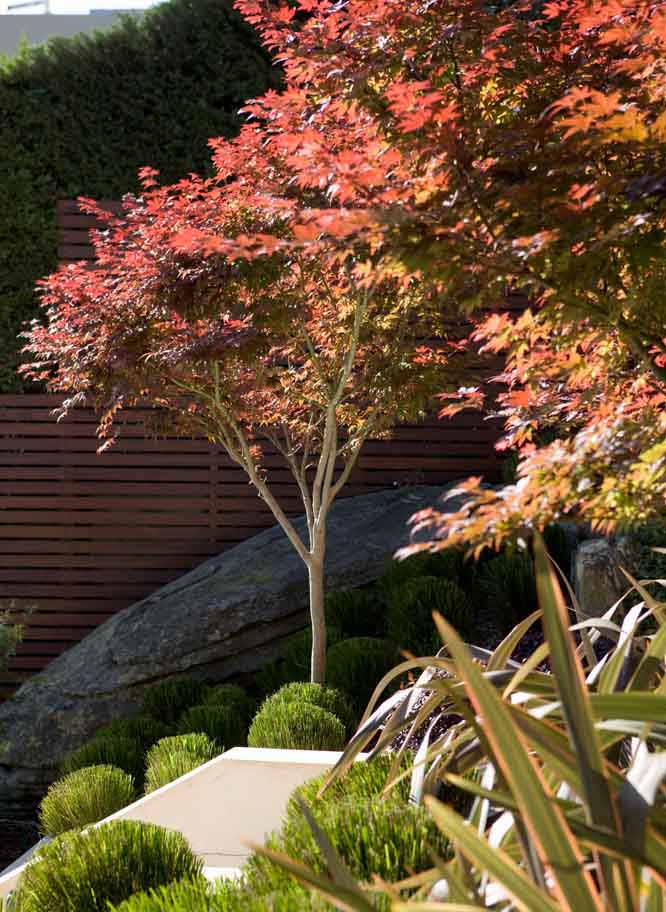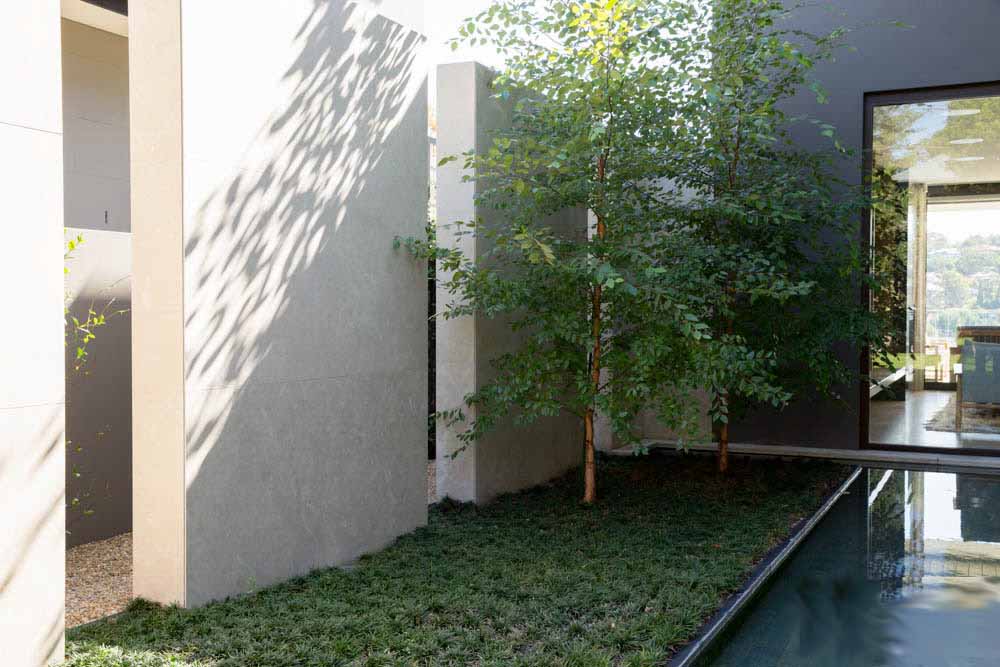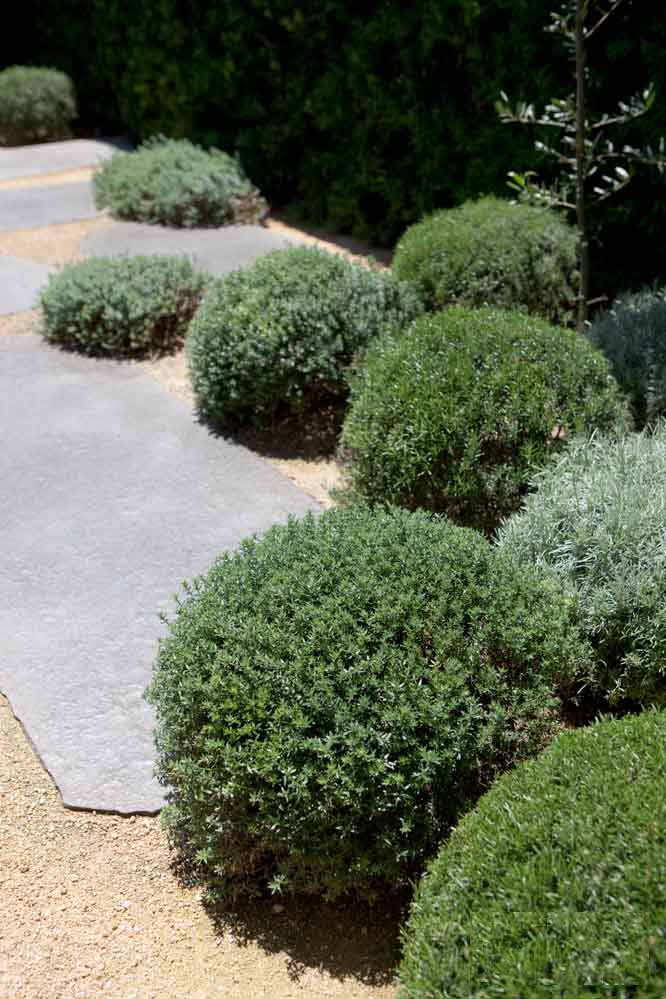Snow Pear
Pyrus nivalis, I use this tree more often than any other. I use…



Many Japanese garden traditions can be used for our own garden design principles. When designing a garden, I rely on these principles to form the basics of my design;
Holistic Approach:
Try to adopt their concept of trying to create a scene where element is connected and no one element dominates at the expense of another. This approach is subtle, and yet forms a ‘big picture’ where, say, only three elements are used to cover the entire garden and they bleed into each other. This concept is natural and mimics many indigenous landscapes around the world.

Choice of Materials:
Because you are only using a limited number of components in your design it is important that you use components that have high visual punch that contrast with each but also fit together so the garden is always looking good. For example, Japanese gardens often contain gravel, plants and stone. Three very different materials that contrast with each other while complimenting each other. This principle teaches us to use restraint , learning to say NO, which is so hard in garden design.

Creating Balance:
So you’ve chosen the elements that make up the concept for your design and it is now how you arrange these elements in your garden so that a type of balance is created. The Japanese Design philosophy teaches us that even though elements are asymmetrically arranged, balance can still be achieved.

Form and Maintenance:
By keeping plants pruned within your garden you’re changing their appearance from a green blob and turning them into a form that gives your garden strength. This green strength balances the hard elements of your design, like gravel and stone. For example, we’ve all seen the sphering of either Buxus or Azaleas that the Japanese do so well in their gardens. The gravel in their gardens is constantly raked so it remains even and light looking making it possible for the gravel to retain its ability to provide a textural strength to the design. I know that if the gravel in my own garden is occasionally raked it better supports the other components.

